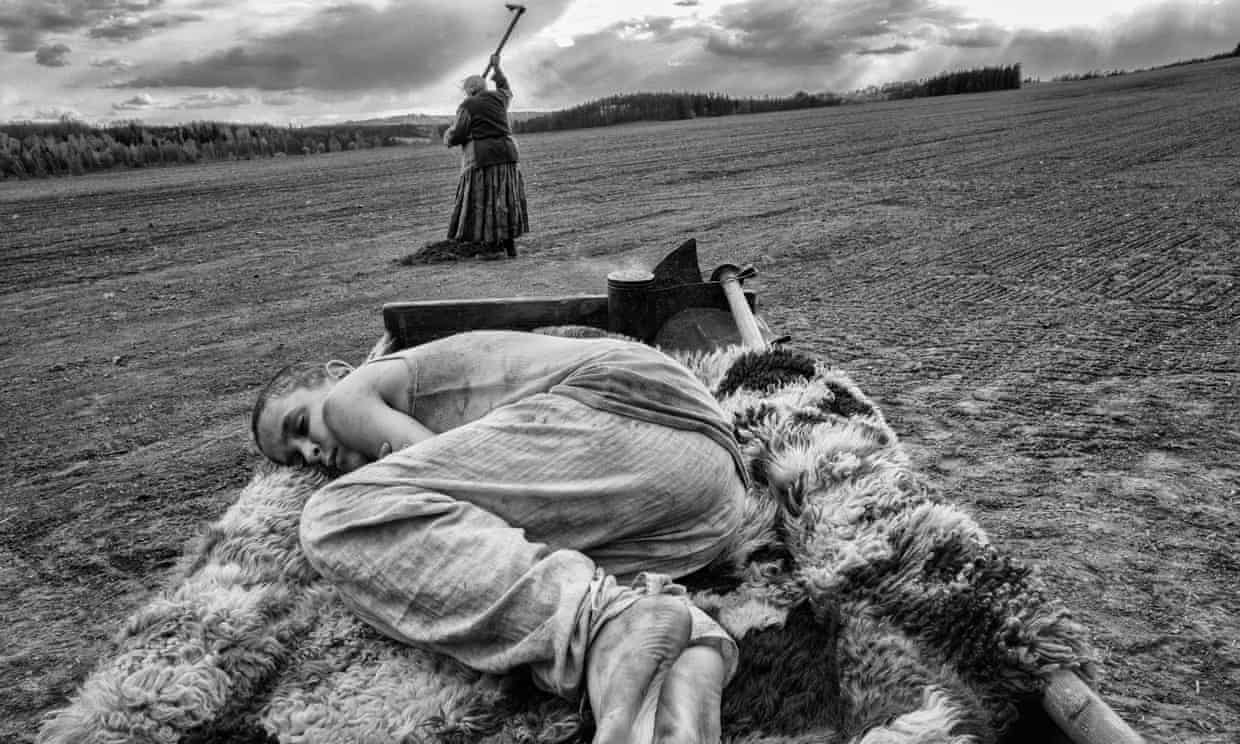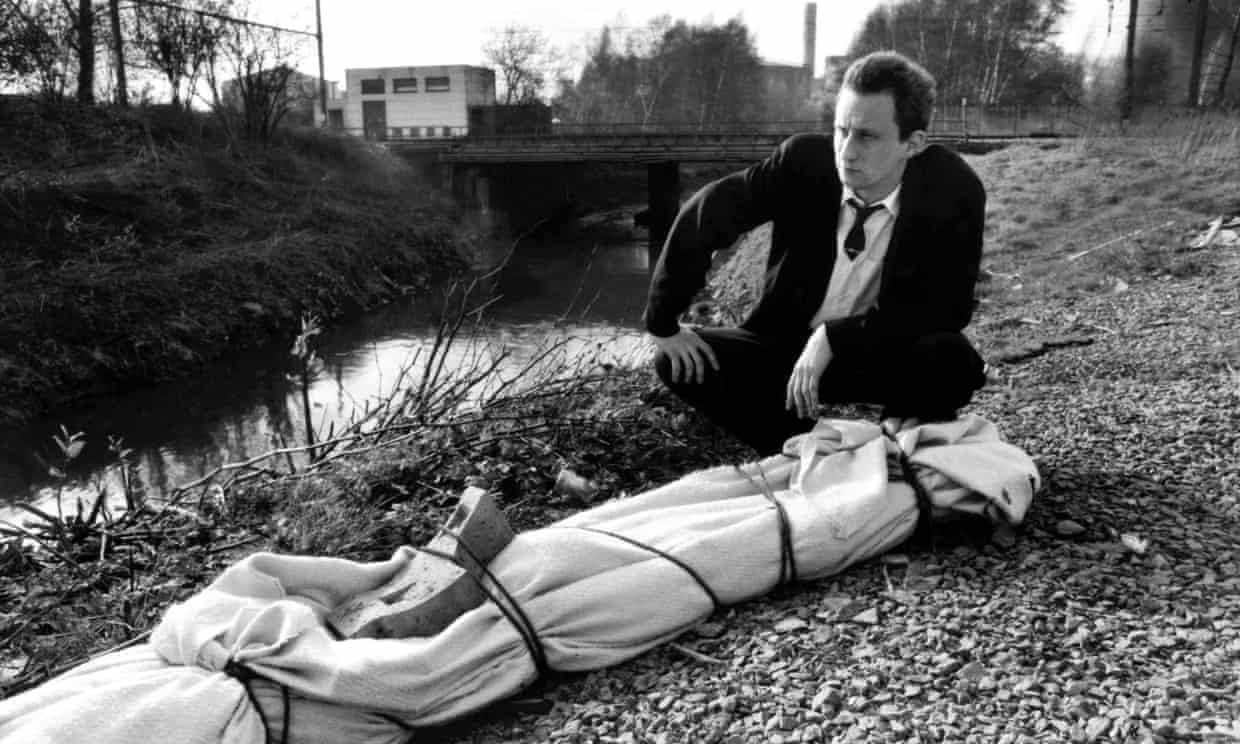
Film
When art films attack: why The Painted Bird's try-hard horrors fail to land
From Haneke to Von Trier, the arthouse provocateur has a long, grim history. But there’s a thin line between trauma and tedium
by Ryan GilbeyLooking back, it’s hard to pinpoint exactly when it was during The Painted Bird that I got the giggles. Most likely it happened somewhere between the child being buried up to his neck to be pecked at by crows, and the cats licking a pair of eyeballs freshly gouged from a man’s head with a spoon. Once a paedophile had met his death at the bottom of a rat-filled well and a goat had been decapitated by a boy who had discovered it was sleeping with his lover, the film had become an arthouse equivalent of the old Four Yorkshiremen sketch with its steeply competing hardships: “Tossed in t’well wi’ rats? We used to dream o’ being tossed in t’well wi’ rats …”
Like most people who will see The Painted Bird, adapted by its director Václav Marhoul from Jerzy Kosiński’s novel about a boy drifting through eastern Europe during the second world war, I had come to the film aware of its reputation. A succès de scandale of this sort arrives every few years. In the 1980s they were the preserve of Peter Greenaway, who held the record for the highest number of audience walkouts at one London cinema with The Cook, the Thief, His Wife and Her Lover. The previous front-runner had been the same director’s 1985 film A Zed & Two Noughts, which featured amputations, decomposing carcasses and even a cameo from Jim Davidson.

Lars von Trier eventually replaced Greenaway at the Top of the Shocks, though there have been other contenders: in the 90s, the gruesome mockumentary Man Bites Dog and Michael Haneke’s punishing Funny Games, and Irréversible, Oldboy and Dogtooth early this century. Each grabbed headlines en route to the arthouse.
The playbook for marketing such a film is well-established. It starts with a festival premiere, from which tales emerge of critics fighting for the exits or fainting – or, in the case of the 2010 outrage A Serbian Film, both. Next come dazed reviews littered with key adjectives: “harrowing”, “gruelling”, “unflinching”. Trailers will promise that the film in question is a work of art, while alluding also to its gruesomeness, thereby covering high and low culture simultaneously. The Painted Bird ticks those boxes. So why does it feel preposterous when other works of a hellish hue inspire dread and admiration?
It would be a twisted soul indeed that found amusement in the granddaddy of the art-shock genre: Pasolini’s 1975 swansong Salò, or The 120 Days of Sodom, a pitiless litany of atrocities perpetrated by fascists on their prisoners. A forbidding coldness of tone precludes any laughter here. It’s perfectly possible to be bored by the film but LOL you will not.
No trace of ugliness remains in The Painted Bird, where suffering and torture are rendered in tastefully charred monochrome. This compares unfavourably to Elem Klimov’s 1985 masterpiece Come and See, a major influence on the newer film. Marhoul has even given a small part in The Painted Bird to Aleksei Kravchenko, who as a teenager played the shell-shocked lead in Klimov’s picture. Back then, Kravchenko’s face grew more twisted and anguished with each scene, the carnage his character witnessed reflected in the deepening, tear-salted grooves of his rapidly ageing face. Now look at Petr Kotlár, the child in The Painted Bird, who only seems to grow healthier the more he endures. I’d wager he has even gained weight by the end of the film. Trauma clearly agrees with him.
Overkill is a very real risk in tipping a film from horror to hilarity. Just ask Lukas Moodysson, who sought to alienate admirers of his sweet-natured hits Show Me Love and Together in the thoroughly vile A Hole in My Heart. With its close-ups of reconstructive labial surgery and a scene in which a man vomits into a woman’s mouth, it was like Jackass without the laughs.

Dish up shock and gore at 10-minute intervals and you must accept the law of diminishing returns. To translate that into Painted Bird imagery: if we’ve already flinched at a ferret on fire, the sight of an elderly woman going the same way five minutes later will be that bit less distressing. An early warning shot can be far more effective at putting an audience on edge. There is nothing in Carl Franklin’s racially charged 1992 thriller One False Move that is as vicious as the opening home-invasion scene. We watch the remainder of the movie in a state of constant, jangling anxiety.
The Painted Bird adheres instead to a principle of arbitrary excess that can only be comic. The real pity is that by the time the movie addresses actual historical genocide, it has inured us to any on-screen pain. We are deaf to the cries of the victims, our ears long since numbed by The Painted Bird’s hollow ersatz song.
• The Painted Bird is released on 11 September.